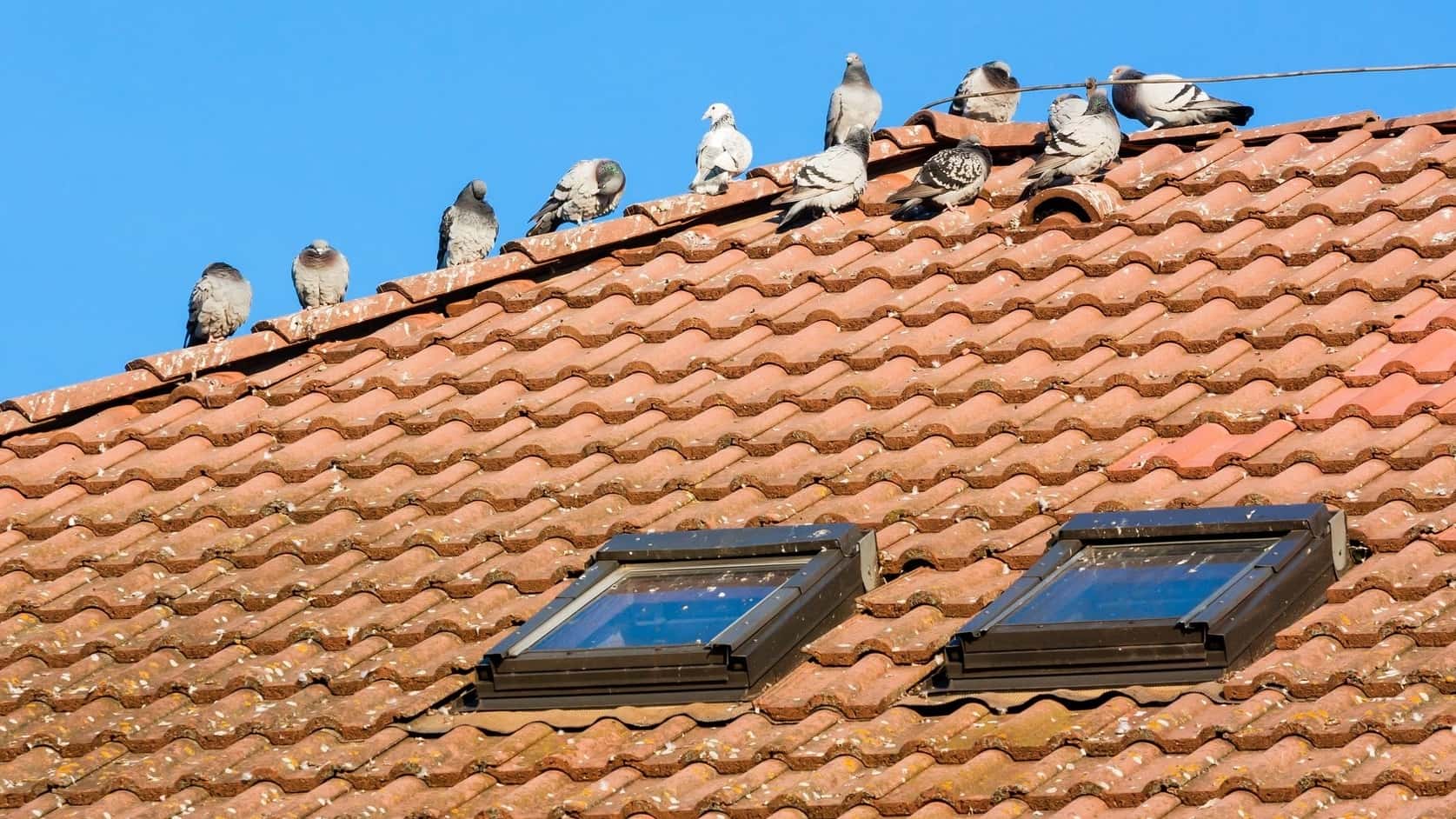Who doesn’t like to wake up to the sound of birds chirping on a sunny spring morning? But despite their beautiful plumage and penchant for song, some birds can be a nuisance.
 Photo by: Shutterstock
Photo by: Shutterstock
Birds are wild animals, and like rats, mice, moles and skunks, they can cause problems when they take up residence in close proximity to human beings.
Bird infestations can soil or damage your home's roof. But how do birds cause roof damage?
Clogged Gutters
Birds typically nest in trees. However, if trees are in short supply or do not offer sufficient protection, some birds may look for the next nearest high structure, which may be your roof line. The soffits and corners of your roof, where gutters converge and connect to downspouts, can be especially attractive to birds, as they also can provide a source of fresh water.
To help prevent infestations, clean your gutter system regularly. If you find abandoned nests or other evidence of bird damage to your gutter system, consider installing gutter guards and/or screens designed to try to prevent large debris from accumulating in gutter channels.
Acidic Droppings
In addition to being unsanitary, large quantities of bird droppings can be particularly damaging to roofing materials. Bird droppings contain a high concentration of uric acid. It may be corrosive enough to weaken roof tar and tar paper, as well as contribute to the disintegration of roof shingles.
Cleaning your roof can be dangerous, so we recommend contacting a professional instead. If you choose to clean up bird droppings yourself, exercise caution. According to the Occupational Safety and Health Administration (OSHA), "more than 60 diseases can be transferred from birds to human beings, sometimes with fatal results."
Dry droppings that can be aerosolized in the form of dust pose the greatest hazard. The OHSA recommends that you wear a respirator designed to filter out such particles and wear protective clothing (gloves, goggles, disposable coveralls).
Compromised Chimneys
Some birds prefer to make their homes in hollow trees, and for these species, your chimney may be an enticing nesting ground. Swifts, who like to attach their nests to the interiors of chimneys, are one of the most notorious types of these birds. Their nests do not present a fire hazard, but they can impede airflow and allow both smoke and carbon monoxide to linger inside your home. Birds — particularly fledglings — can also occasionally slip and fall out of their nests and into your home.
Employ the services of a chimney sweep to regularly inspect and clean your chimney, especially before the fall and winter, when you may be making use of your fireplace. Also consider having a chimney cap installed to deter birds and other unwanted animal guests from entering your home.
Attic Scavenging
All of the above damage can leave your attic vulnerable to roosting birds. Any valuables stored in your attic may also be subject to damage by these unwelcome visitors. You are likely to hear a bird infestation before you see evidence of one. Any persistent, high-pitched noises issuing from your ceiling should be investigated. You should also walk the perimeter of your home to see if you can spot where the birds have entered. Once the birds have been removed, have all points of entry sealed.
Birds And Bugs
As OSHA notes, bird droppings are a source of bacteria, viruses and fungi that can cause serious health issues for humans. Worse, birds can bring their own insect parasites into your home, including fleas, mites, lice, ticks and even a relative of the bed bug.
If you're careful about routinely inspecting your property and doing proper preventive maintenance, you can help keep your home secure and free from bird pests. If you're dealing with a current infestation, the best way to safely remove these birds before they cause serious damage to your roof is to contact a pest control professional.
The pest control professionals at Terminix® are trained experts who know the best methods for controlling your local bird species and how to apply proven tools and techniques to remove problem birds from your property.
Sources:
Hiptoplasma = https://www.cdc.gov/fungal/diseases/histoplasmosis/



